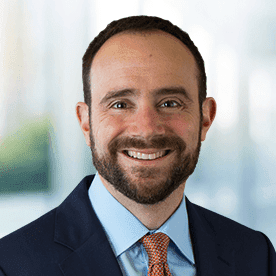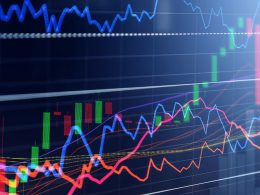by Eric Winograd, Senior Economist—Fixed Income, AllianceBernstein
After several months of buildup, the Federal Reserve announced last week the long-expected taper. Later this month, the US central bank will begin reducing the pace of its Treasury and mortgage-backed security purchases by $15 billion per month.
As we’ve suggested, the taper announcement came and went without a tantrum: the Fed, having learned from the 2013 experience, avoided a severe market reaction by making its intentions clear well in advance. If the pace of tapering is steady, as we expect, the Fed will be done with this version of quantitative easing (QE) in eight months—in mid-2022.
That’s when things get interesting.
The general view, which we share, is that the Fed can’t or won’t raise interest rates while it’s still making purchases under QE. That means the earliest it could raise rates is next summer. Indeed, the market has priced in that possibility, with the US yield curve now incorporating two 25-basis-point rate hikes before the end of 2022. That’s a big change from only a few weeks ago: markets are more worried about inflation and more confident that central banks will respond aggressively to rising price pressures.
A More Dovish Fed Policy Tone than Expected
However, the Fed was more guarded about its intentions. The onset of tapering brings rate hikes into view, but unlike many other central banks, the Fed seems less certain about acting. Chair Powell acknowledged that wrapping up the QE program puts policymakers in position to respond to higher inflation—if necessary at that time.
The “if necessary” clause is critical to the Fed’s thinking. The Fed is unconvinced that US inflation will stay elevated and doesn’t believe the economy is back to full employment yet—benchmarks that must be hit before rate hikes start. That uncertainty left the tone of the Federal Open Market Committee (FOMC) meeting this week more dovish than the market anticipated.
Simply put, the Fed’s thinking around inflation hasn’t changed as much as the market’s in the past six weeks. While the Fed sees a range of possible inflation outcomes, some requiring more aggressive monetary policy responses, it hasn’t concluded that the economy is headed toward one of them—at least based on this week’s meeting.
The Fed Still Views Higher Inflation as Transitory
The Fed acknowledges higher inflation but describes it as “largely reflecting factors that are expected to be transitory." The previous FOMC statement described elevated inflation as “largely reflecting transitory factors." The takeaway: the new statement may be a bit more hedged, but the difference is hardly a paradigm shift.
Powell delivered a similar message in his post-meeting press conference, acknowledging near-term price pressures but reiterating that he expects supply chains to heal and inflation to fade. He did indicate that the Fed would respond if its assessment of the situation changed, but his comments made clear that this hasn’t happened yet. The discussion of policy responses to more persistent inflation was phrased as a hypothetical—not a realized event.
A “Wait-and-See” Approach—and More Clues in December
None of this means that the Fed won’t respond to price pressures in time, but it does suggest that the central bank doesn’t yet feel the market’s sense of urgency to act.
Will this gap last? Only time will tell. The Fed’s December meeting will be very interesting, indeed. The FOMC will unveil new economic and interest-rate forecasts, including an updated dot plot of rate expectations—clues that will give us a better read on the committee’s medium-term intentions. For now, however, the committee seems happy to wait for more information before sending a clear message about the future path of US interest rates.
Eric Winograd is a Senior Vice President and Senior Economist for Fixed Income, responsible for the economic and interest-rate analysis of the US, Canada and Mexico. He joined the firm in 2017. From 2010 to 2016, Winograd was the senior economist at MKP Capital Management, a US-based diversified alternatives manager, where he produced thematic research to describe, illuminate and forecast the market environment for the firm's investment team. From 2008 to 2010, he was the senior macro strategist at HSBC North America, responsible for generating macroeconomic views for their Private Bank Investment Group of the Americas and applying them to asset allocation, portfolio construction and tactical trade decisions. Earlier in his career, Winograd worked at the Federal Reserve Bank of New York and the World Bank. He holds a BA (cum laude) in Asian studies from Dartmouth College and an MA in international studies from the Paul H. Nitze School of Advanced International Studies. Location: New York

















